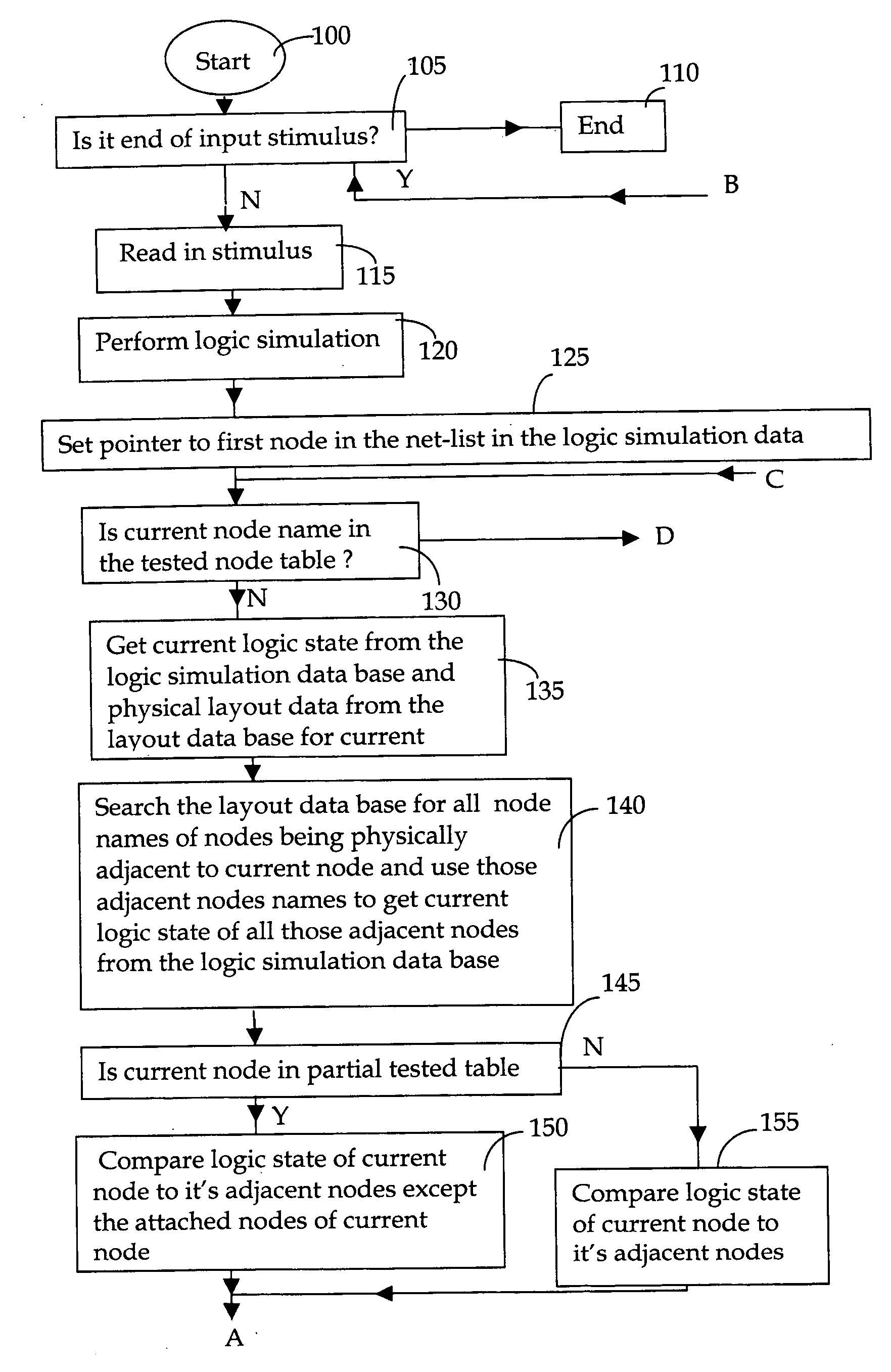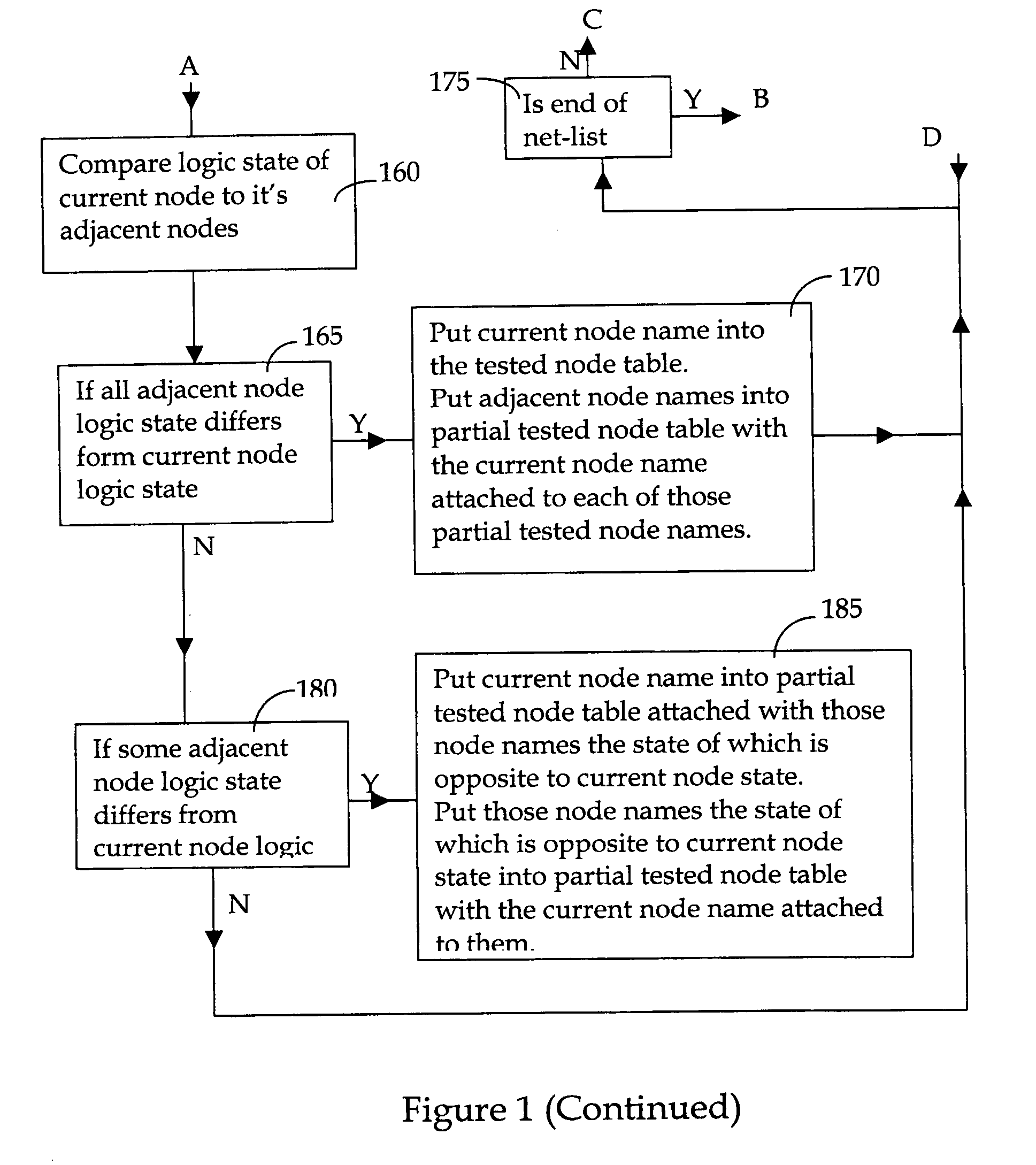Generation of test vectors for testing electronic circuits taking into account of defect probability
a technology of electronic circuits and test vectors, applied in the field of generation of test vectors for testing electronic circuits taking into account the probability of defects, can solve the problems of high percentage fault coverage, affecting the manufacturing and testing of ic chips, and the probability of any node being shorted or mis-wired to any other node is unpredictable or at least very difficult to characterize, so as to reduce the number of test vectors. , the effect of simplifying and reducing the number of vectors
- Summary
- Abstract
- Description
- Claims
- Application Information
AI Technical Summary
Benefits of technology
Problems solved by technology
Method used
Image
Examples
Embodiment Construction
[0016] The present novel invention is different and totally non-obvious when compared to the conventional wisdom of fault coverage theory. Instead of focusing on detection of all faults or maximum number of faults, it takes into the account of the characteristics of modern day technologies of manufacturing processes for the integrated circuit and other electron circuit. A new approach is implemented to detect potential defects of circuits or circuit connectivity by taking into account the defect probability and defect density. Typically there are three types of failures that commonly cause circuit faults. The first two types, the internal circuit continuity, i.e., broken traces, within a node and excessive leakage between nodes are much less of a problem for testing. An internal circuit continuity test can be simply carried out by driving the respective nodes to two different states, i.e., 1 and 0's in binary logic system until an output change occurs and measuring the output for co...
PUM
 Login to View More
Login to View More Abstract
Description
Claims
Application Information
 Login to View More
Login to View More - R&D
- Intellectual Property
- Life Sciences
- Materials
- Tech Scout
- Unparalleled Data Quality
- Higher Quality Content
- 60% Fewer Hallucinations
Browse by: Latest US Patents, China's latest patents, Technical Efficacy Thesaurus, Application Domain, Technology Topic, Popular Technical Reports.
© 2025 PatSnap. All rights reserved.Legal|Privacy policy|Modern Slavery Act Transparency Statement|Sitemap|About US| Contact US: help@patsnap.com



